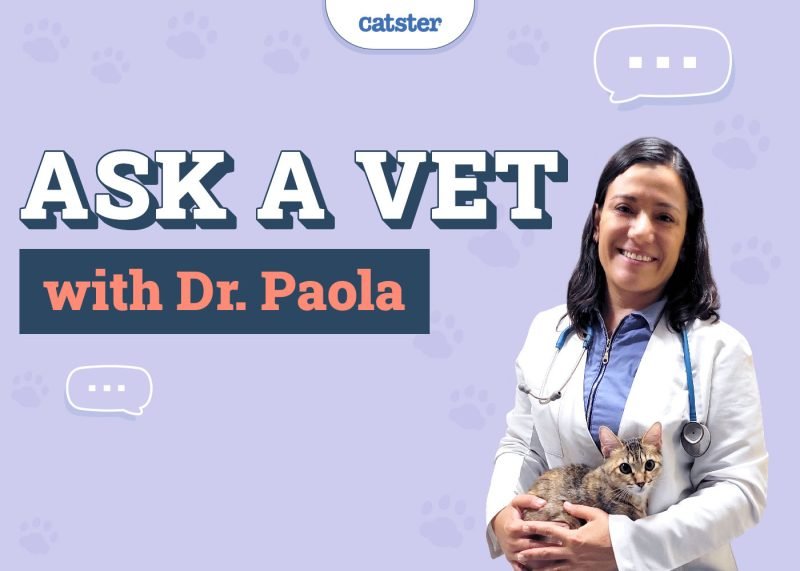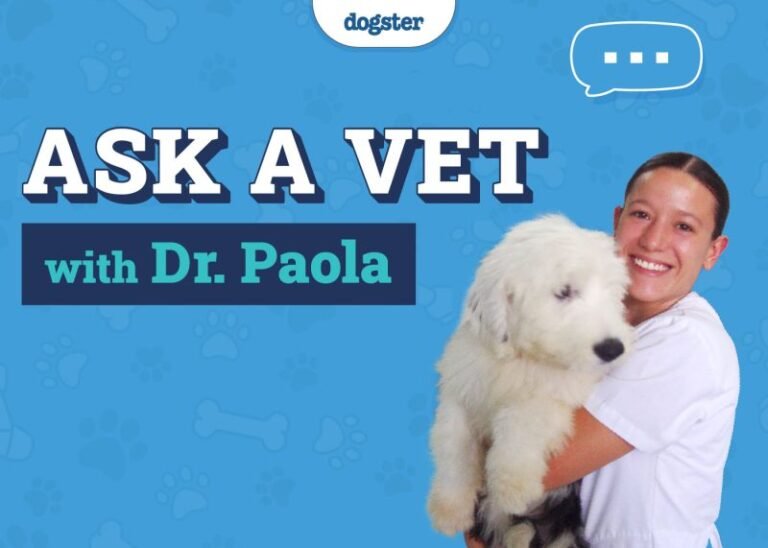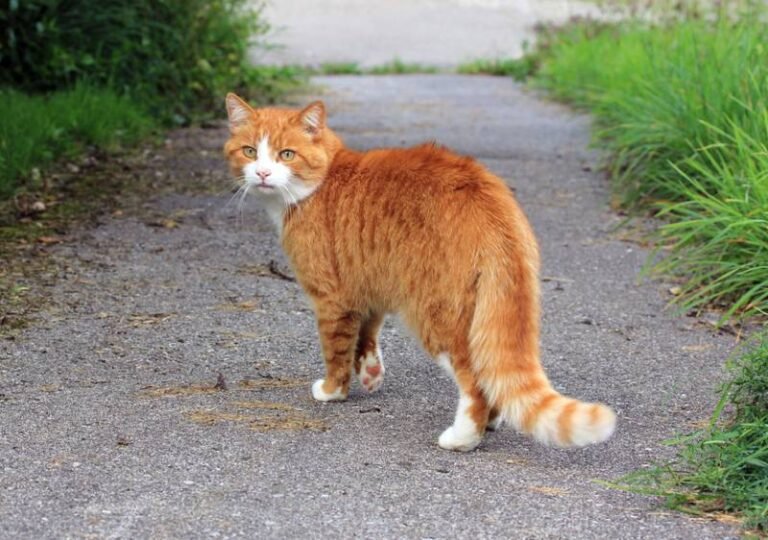

Welcome to our “Ask Dr. Paola” series, where every Monday we bring expert advice straight from Dr. Paola Cuevas (MVZ) to help our readers better understand their cat’s health and well-being.
Whether you’re a new pet parent or a seasoned cat lover, Dr. Paola is here to provide answers to your most pressing questions. From nutrition tips and preventive care to troubleshooting common behavioral issues, Dr. Paola is ready to offer insights that will keep your kitty happy, healthy, and feline fine. Stay tuned for expert guidance on a range of topics that matter most to you and your cat, so you can make informed decisions and provide the best possible care for your furry companion.
Have a question? Send it in here!

Help! My Cat Uses My Other Cats Litterbox!
“Dear Dr. Paola
I adopted two cats. They love each other a lot, but Strudel will use Gray’s litter box, and then Gray won’t use either, so I have to clean the whole box out and start fresh. How can I separate them for bathroom time? “– Riley
Hi Riley,
It’s lovely that Strudel and Gray share such a strong bond, but I understand how frustrating it can be when one cat’s litter habits disrupt the other’s. What you’re seeing is a common issue in multi-cat households. Even when cats get along well, sharing a litter box can create a subtle form of competition or stress, especially if one cat is sensitive to scent cues. For Gray, the lingering smell of Strudel’s urine or feces may signal that the box is no longer his space, leading him to avoid both boxes entirely.
Providing multiple litter boxes, ideally one per cat plus an extra, and placing them in separate areas can help reduce this tension. Just as we prefer our own space for personal routines, cats benefit from having choices. Also, when cleaning the boxes, using an enzymatic cleaner is essential. These products break down the organic compounds in urine and feces at the molecular level, removing not just the visible mess but also the scent markers that communicate territory. Regular soap or disinfectants often leave behind traces that are undetectable to us but still meaningful to cats. Using an enzymatic spray after deep cleaning helps reset the box so it smells neutral to both cats, which is key for encouraging consistent use.
If space is limited or the issue continues, a one-on-one consultation with us at PangoVet can help determine whether this is strictly behavioral or if there may be another reason for Gray’s reluctance to use the litter box. Addressing it early supports their bond and helps keep litter box avoidance from becoming a long-term habit.
Good luck!
Dr. Paola

If you’d like to talk with a vet, like Dr. Paola or one of our other expert veterinarians, you can head over to PangoVet. It’s our online service where you can talk with a vet online and get the advice you need for your cat — all at an affordable price!
Catster reader exclusive deal: Save 65% on your first call, use code ASKDRPCATSTER65 at checkout.


Help! My Cat Gets Hairballs!
“I always thought hairballs were a part of having cats, but have recently learned that not all cats get hairballs and that it doesn’t have to be commonplace. My cat Luna does get them. Is it just a way of life? She’s long-haired, and we do brush her, but she grooms extra after we do. Can you help? ” – Tiana
Hi Tiana,
You’re absolutely right to question the idea that hairballs are just part of having a cat. While an occasional hairball can occur, especially in long-haired cats during seasonal shedding, it should not be a frequent event. In a healthy digestive system, most ingested hair passes through and is eliminated in the stool. When hairballs become regular, this often points to issues with motility or excessive grooming. Luna’s post-brushing grooming may increase her hair intake, especially if she’s feeling the need to re-establish her scent or soothe herself afterward.
In addition to daily brushing, increasing her hydration can make a meaningful difference. Moisture-rich diets, such as high-quality wet or fresh food, support digestive transit and help hair move through the gut more efficiently. Encouraging her to drink more water by offering a feline water fountain can also promote gastrointestinal health. Cats naturally have a low thirst drive, so environmental strategies like these are often necessary. Some veterinary therapeutic diets or fiber supplements may also help reduce hairball formation by improving gut motility. If Luna is producing hairballs more than once a month, or if there are additional signs like vomiting unrelated to hair, lack of appetite, or constipation, further evaluation is warranted.
Best,
– Dr. Paola

How Can I Help My Cat’s Anxiety During Storms?
“Hi Dr. Paola,
My cat Dana will only, and I mean only, drink from a cup on my bedside table. If we move the cup elsewhere, nothing. Why does she do this? And how can we find a better spot for it? She’s a bit large, and I have to keep the nightstand clear so she doesn’t knock things over when going for a drink. “ – Ginny
Hi Ginny,
Dana’s insistence on drinking from a cup on your nightstand is actually quite common among cats. They often choose drinking spots based on a sense of safety, routine, and environmental control. That specific location likely feels secure to her, is elevated, and provides easy access during calm, quiet moments. Cats are very sensitive to location and may avoid water sources if anything about the setting feels unfamiliar or inconvenient. She may also associate that space with your presence, which adds a layer of comfort.
To help her transition to a better spot, try placing a sturdy box next to your nightstand, ideally at the same height, and put her preferred cup there. Once she accepts that setup, you can gradually move the box a short distance every three to four days until it reaches your desired location. This slow change respects her sensitivity to environmental shifts and gives her time to adjust without stress. Choosing a quiet area away from food and litter, and keeping the same type of cup she already uses, can make the process smoother. If she resists the move, a water fountain in the final location may add extra appeal, since many cats are drawn to the movement and freshness of running water.
Dr. Paola
- Read last weeks questions here – July 28, 2025
- Find the full list of past articles here
- Click here to submit a question

